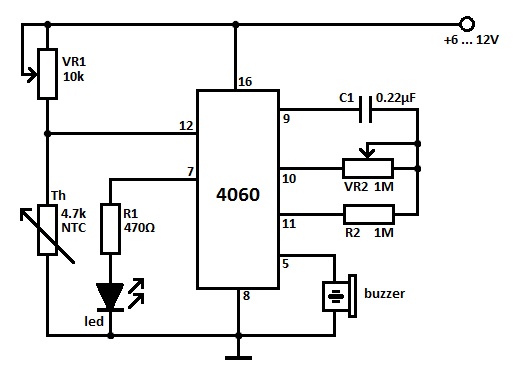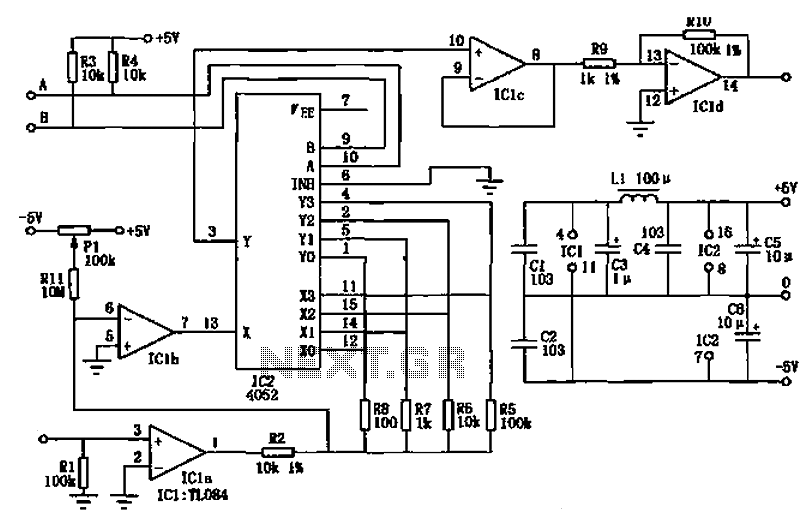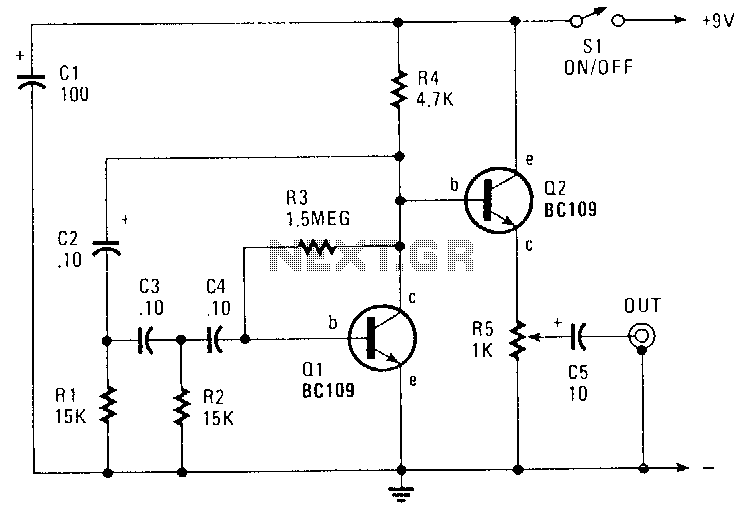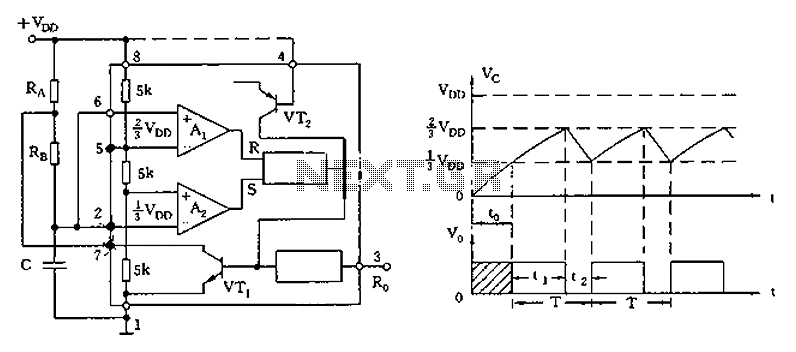
Audio Processor Circuit
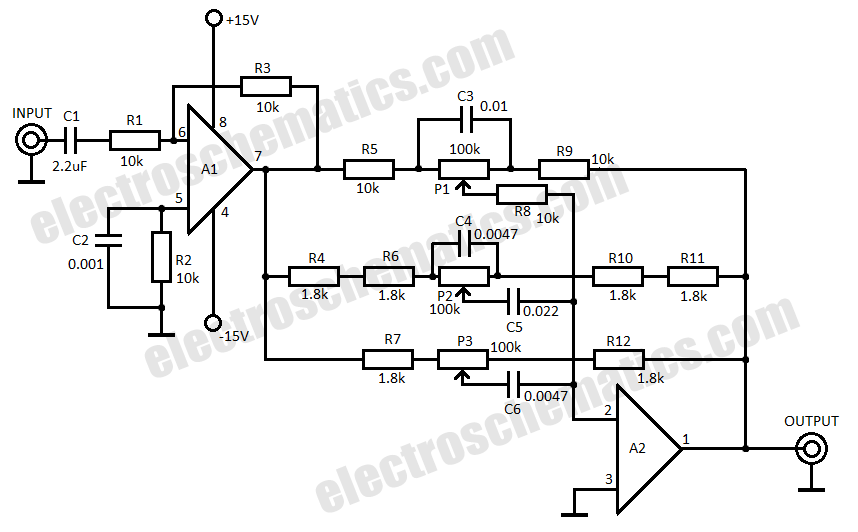
This audio processor circuit utilizes the SSM2045 integrated circuit (IC), specifically designed for electronic music applications, alongside the 741 operational amplifier (op-amp) IC.
The audio processor circuit is centered around the SSM2045, which is renowned for its ability to provide dynamic range compression and is particularly well-suited for enhancing electronic music signals. The SSM2045 operates by adjusting the gain of the audio signal based on its amplitude, effectively compressing louder sounds and amplifying quieter ones. This functionality is crucial in electronic music, where maintaining audio clarity and balance is essential.
In conjunction with the SSM2045, the 741 op-amp is employed to perform various signal conditioning tasks. The 741 is a versatile op-amp capable of providing amplification, filtering, and buffering of audio signals. It can be configured in different configurations such as inverting, non-inverting, or as a voltage follower, depending on the specific requirements of the circuit design.
The circuit layout typically includes input and output connectors for audio signals, power supply connections for both the SSM2045 and the 741 op-amp, and passive components such as resistors and capacitors that set the gain and frequency response of the circuit. The use of high-quality components is recommended to minimize noise and distortion, ensuring optimal audio performance.
In summary, this audio processor circuit effectively combines the specialized capabilities of the SSM2045 with the general-purpose functionality of the 741 op-amp to create a robust solution for processing electronic music signals. The design considerations should focus on achieving the desired dynamic range and audio fidelity, making it suitable for both live performances and studio applications.This audio processor circuit features the SSM2045 IC which was developed specially for electronic music applications and the 741 opamp IC. The circuit is c.. 🔗 External reference
The audio processor circuit is centered around the SSM2045, which is renowned for its ability to provide dynamic range compression and is particularly well-suited for enhancing electronic music signals. The SSM2045 operates by adjusting the gain of the audio signal based on its amplitude, effectively compressing louder sounds and amplifying quieter ones. This functionality is crucial in electronic music, where maintaining audio clarity and balance is essential.
In conjunction with the SSM2045, the 741 op-amp is employed to perform various signal conditioning tasks. The 741 is a versatile op-amp capable of providing amplification, filtering, and buffering of audio signals. It can be configured in different configurations such as inverting, non-inverting, or as a voltage follower, depending on the specific requirements of the circuit design.
The circuit layout typically includes input and output connectors for audio signals, power supply connections for both the SSM2045 and the 741 op-amp, and passive components such as resistors and capacitors that set the gain and frequency response of the circuit. The use of high-quality components is recommended to minimize noise and distortion, ensuring optimal audio performance.
In summary, this audio processor circuit effectively combines the specialized capabilities of the SSM2045 with the general-purpose functionality of the 741 op-amp to create a robust solution for processing electronic music signals. The design considerations should focus on achieving the desired dynamic range and audio fidelity, making it suitable for both live performances and studio applications.This audio processor circuit features the SSM2045 IC which was developed specially for electronic music applications and the 741 opamp IC. The circuit is c.. 🔗 External reference
